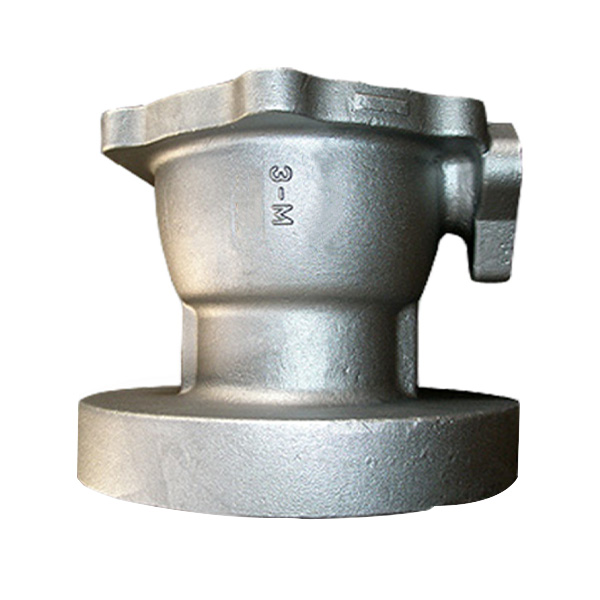Mobile:+86-311-808-126-83
Email:info@ydcastings.com
exhaust fan impeller
The Importance of Exhaust Fan Impellers in Efficient Ventilation Systems
In the modern age of industrialization and urban living, proper ventilation in buildings and spaces has become a crucial aspect of ensuring health and comfort. One of the key components that facilitate effective ventilation systems is the exhaust fan impeller. This article delves into the significance of exhaust fan impellers, their design, functionality, and impact on overall air quality and system efficiency.
Understanding Exhaust Fan Impellers
An exhaust fan impeller, often referred to as a fan wheel, is the rotating component of an exhaust fan responsible for moving air efficiently through a system. Its primary function is to create a pressure differential, enabling the expulsion of stale or contaminated air from a space and facilitating the intake of fresh air. The design of the impeller dramatically influences the performance of the fan, affecting airflow rate, static pressure, and energy consumption.
Types of Impellers
Exhaust fan impellers come in various shapes and sizes, tailored to meet specific ventilation needs. The most common types include
1. Centrifugal Impellers These impellers utilize a rotating mechanism that draws air in through the center and expels it at the periphery. Their design allows for high pressure and volumetric flow rates, making them ideal for transporting air over longer distances.
2. Axial Impellers Designed to move air parallel to the axis of rotation, axial impellers are often more efficient for applications requiring high airflow at lower pressures. They are commonly found in larger spaces such as warehouses and factories where extensive air circulation is necessary.
3. Backward Curved Impellers These impellers combine the benefits of centrifugal designs and high efficiency. The backward curve minimizes air resistance and maximizes airflow, making them suitable for applications that demand quiet operation alongside effective performance.
exhaust fan impeller

The Role of Impeller Design
The design of the impeller is critical in determining the effectiveness of an exhaust fan. Factors such as blade shape, angle, and material play a significant role in its performance. For instance, a well-designed blade shape can reduce turbulence, enhancing the overall airflow efficiency while lowering energy consumption. Impellers made from lightweight yet durable materials, such as aluminum or high-grade plastic, can also contribute to noise reduction and longevity.
Impact on Energy Efficiency
As energy conservation becomes increasingly pertinent, the efficiency of exhaust fan impellers directly influences operational costs. A high-efficiency impeller design can reduce the amount of energy required to maintain adequate airflow, resulting in lower utility bills and a smaller carbon footprint. The adoption of variable speed technology and advanced motor systems further enhances energy savings by allowing the fan to operate at different speeds based on real-time airflow demands.
Maintenance and Lifespan
Regular maintenance of exhaust fan impellers is essential to ensure optimal performance and longevity. Dust and debris can accumulate on the blades, leading to decreased efficiency and increased energy consumption. Periodic cleaning and inspection help mitigate these issues, extending the lifespan of the impeller and the overall ventilation system.
Conclusion
In conclusion, the exhaust fan impeller is a fundamental component of efficient ventilation systems, playing a pivotal role in maintaining air quality and comfort in various environments. Understanding the different types of impellers, their designs, and their impact on energy efficiency is crucial for anyone involved in building management or HVAC systems. With proper maintenance and thoughtful selection, exhaust fan impellers can significantly enhance the performance of ventilation systems, ultimately contributing to healthier indoor spaces and a reduction in environmental impact. Embracing innovations and advancements in impeller technology will be vital as we move forward in creating sustainable and efficient living and working conditions.
-
Impeller Technology That Powers Precision in Pump SystemsNewsMay.22,2025
-
Valve Durability Begins with Quality Cast Iron ComponentsNewsMay.22,2025
-
Performance Cooling with Advanced Automobile Water Pump SolutionsNewsMay.22,2025
-
How Motor Housing and Oil Pans Shape Engine PerformanceNewsMay.22,2025
-
How Metal Castings Drive Modern Manufacturing EfficiencyNewsMay.22,2025
-
Exploring the Engineering Behind Valve Body CastingsNewsMay.22,2025











